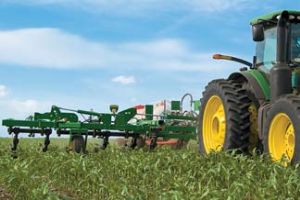Iowa Farmers Urged to Plant Cover Crops in Unplanted Fields for Future Success

The planting of cover crops in Iowa's unplanted fields could benefit farmers in 2014
While many of Iowa’s farmers are struggling to plant in fields submerged in water, a recent MessengerNews article indicates farmers should explore the idea of planting cover crops (crops grown for the protection and enrichment of soil, also known as green manure) in unplanted fields to benefit next year’s crops.
Recent reports indicate “there will be many farms which remain too wet to plant, particularly in the northern Cornbelt states which had perfect weather and great yields last year and planned to expand their corn and soybean acreage this year.” According to the MessengerNews article, Barb Stewart, state agronomist with the Natural Resources Conservation Service (NRCS) in Iowa, believes planting a cover crop will assist farmers with unplanted fields by capturing applied nutrients, fix nitrogen, build organic matter, control weeds, reduce erosion, and improve soil health and biology during the remainder of the planting season.
By doing so, "Iowa farmers can build considerable yield potential for following year crops," Stewart said. Stewart believes cover crop selection and management should focus around maximizing both above and below-ground biomass. This will allow for nutrient cycling throughout the entire soil profile. A cover crops guide for Iowa producers suggests, “Cover crops should be terminated as late as feasible to maximize plant growth and residual nutrient accumulation, while allowing sufficient time for the cover crop to decompose, release nutrients, and recharge soil moisture.”
While some of Iowa’s fields may be unable to be used for 2013 crop success, the planting of cover crops could prepare the fields for success in 2014 according to the NRCS.